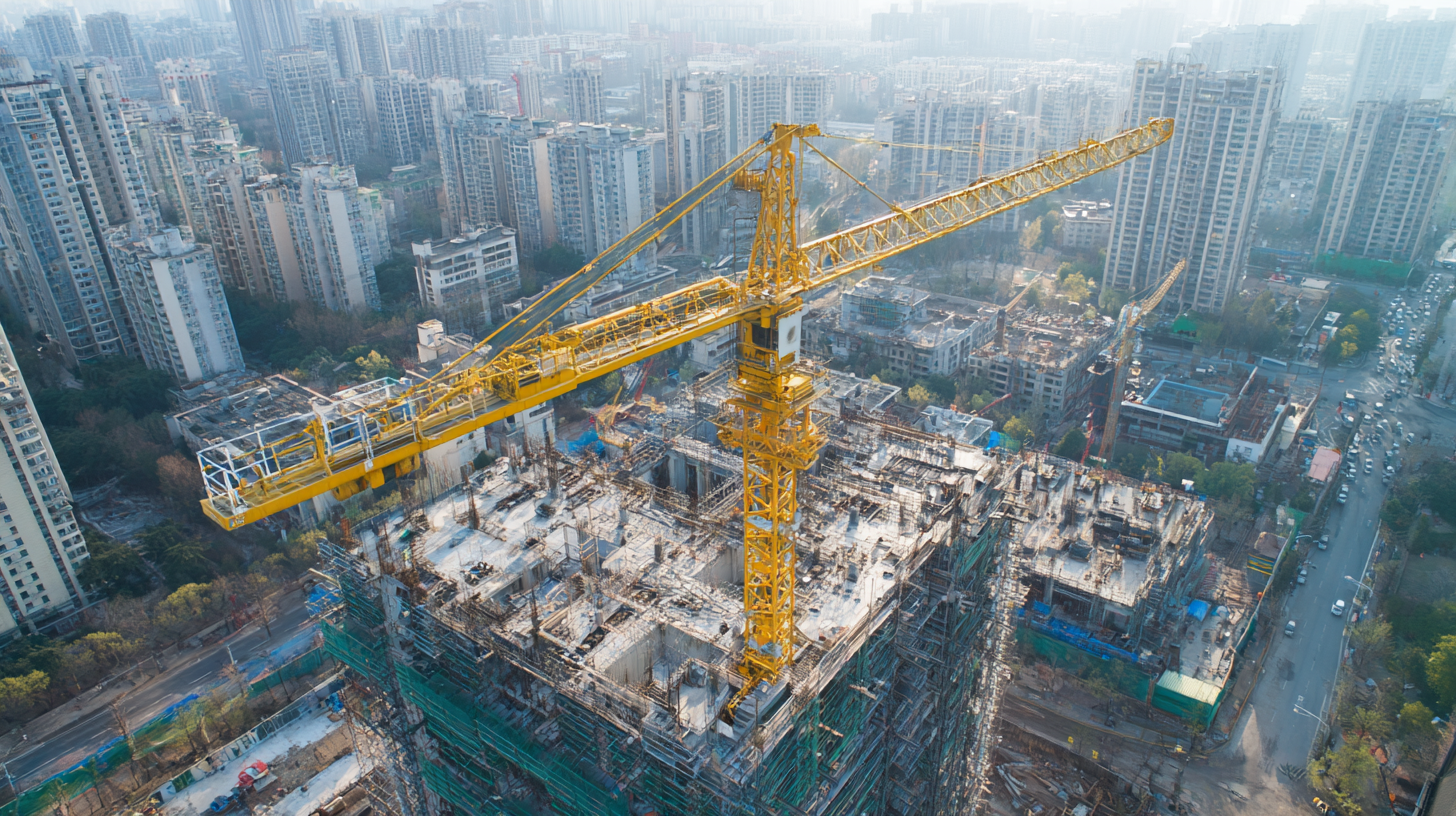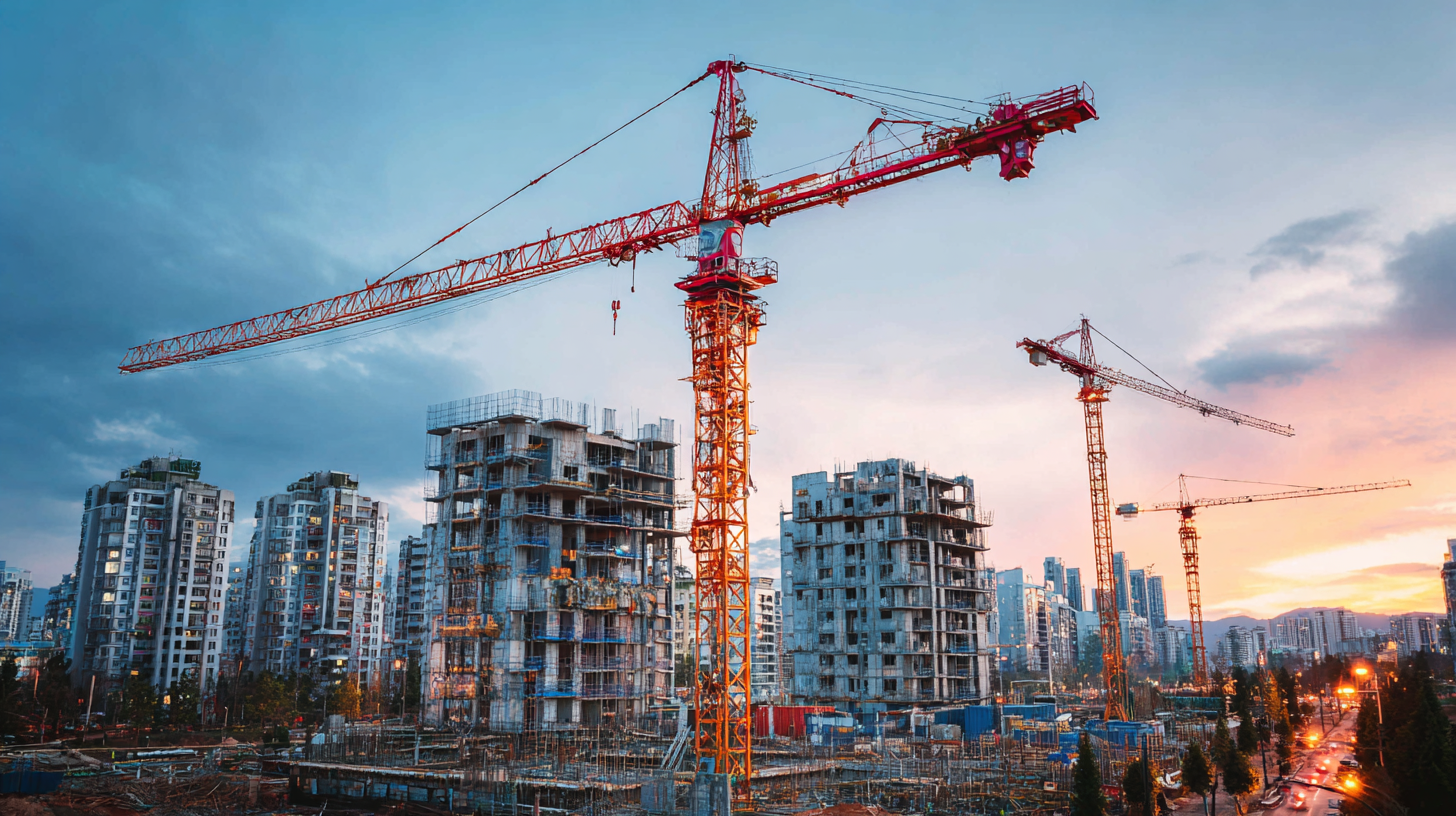 In the ever-evolving construction industry, Tower Cranes play a pivotal role in enhancing operational efficiency and safety on job sites. According to the latest report by the International Association of Crane and Rigging Professionals, the global tower crane market is projected to grow significantly, driven by increasing urbanization and infrastructure development. However, not all tower cranes are created equal. Understanding the specific traits that distinguish the best models is essential for addressing diverse construction requirements and maximizing productivity. From load capacity to reach and height, these factors can greatly influence a project's success. As construction demands continue to rise, knowledge of industry standards and appropriate selection criteria for tower cranes becomes imperative for project managers and contractors alike, ensuring they not only meet but exceed their operational expectations.
In the ever-evolving construction industry, Tower Cranes play a pivotal role in enhancing operational efficiency and safety on job sites. According to the latest report by the International Association of Crane and Rigging Professionals, the global tower crane market is projected to grow significantly, driven by increasing urbanization and infrastructure development. However, not all tower cranes are created equal. Understanding the specific traits that distinguish the best models is essential for addressing diverse construction requirements and maximizing productivity. From load capacity to reach and height, these factors can greatly influence a project's success. As construction demands continue to rise, knowledge of industry standards and appropriate selection criteria for tower cranes becomes imperative for project managers and contractors alike, ensuring they not only meet but exceed their operational expectations.
When selecting the right tower crane for diverse construction projects, understanding the key characteristics of top models is essential. First and foremost, the lifting capacity plays a crucial role, as different jobs may require moving heavy materials over varying distances. High-capacity cranes are ideal for large-scale projects, while lighter models may suffice for residential or smaller commercial builds. Additionally, the range of the crane, including its height and swing radius, must align with the specific site constraints and architectural requirements to ensure efficient operations.
Another critical trait to consider is the ease of assembly and disassembly. A crane that is easier to set up can significantly reduce downtime and labor costs on any construction site. Features such as modular designs and automated systems can enhance safety and efficiency, making them invaluable in fast-paced construction environments. Moreover, modern tower cranes often include advanced technology for monitoring load weight and operational stability, which supports better management and reduces the risk of accidents. By focusing on these key characteristics, construction managers can make informed choices that boost productivity and adapt to the diverse needs of their projects.
When selecting a tower crane for your construction project, evaluating load capacity is crucial to ensure safety and efficiency. Load capacity refers to the maximum weight a crane can safely lift and maneuver, which varies significantly among different models. Factors such as the crane's design, height, and hoisting mechanisms influence its capacity. Understanding these features allows project managers to choose a crane that aligns with specific construction requirements, whether for heavy lifting of steel beams or lighter materials like drywall.
Furthermore, while load capacity is vital, it's equally important to consider the specific conditions of your job site. For instance, if space is limited, a crane with a compact design and higher lifting speed may be necessary to optimize productivity. Additionally, assess the type of materials you will be handling and their weight distribution. By carefully evaluating both the load capacity and the unique constraints of your construction environment, you can make an informed decision that enhances the overall success of your project.
| Crane Type | Load Capacity (tons) | Max Height (m) | Max Radius (m) | Ideal Use Case |
|---|---|---|---|---|
| Hammerhead Crane | 10 - 25 | 50 | 40 | High-rise buildings |
| Luffing Jib Crane | 5 - 20 | 60 | 30 | Limited urban sites |
| Flat Top Crane | 8 - 30 | 70 | 50 | Large-scale projects |
| Self-Erecting Crane | 3 - 10 | 30 | 25 | Residential buildings |
| Tower Crane | 10 - 40 | 50 | 60 | General construction |
When it comes to selecting the right tower crane for a construction project, understanding the different types and their applications is crucial. Tower cranes, commonly utilized in the construction of tall buildings and large infrastructures, come in various configurations. The most common types include both stationary and mobile tower cranes.
Stationary tower cranes are typically used for large projects where the crane can be assembled on-site and remain fixed for an extended period. These cranes are capable of lifting heavy loads to significant heights, making them ideal for skyscrapers and high-rise constructions.
On the other hand, mobile tower cranes offer versatility and can be transported easily from one site to another. They are particularly useful for smaller projects or renovations where space is limited. Another type worth noting is the flat-top tower crane, prized for its design that allows for easy access to the work site, which is particularly beneficial when working on tight sites. Each type of tower crane has distinct advantages, and understanding these will help project managers choose the best option tailored to their specific construction needs.
When selecting a tower crane for construction projects, several critical factors must be taken into account to ensure safety and efficiency. According to recent studies, tower cranes account for a significant percentage of accidents on construction sites, with the majority resulting from insufficient planning and oversight during their operation.

Key considerations include crane capacity, height, and the specific site conditions, such as wind loads and nearby structures, as these can greatly affect the crane's performance and stability.
Furthermore, the automation of tower cranes has surged over the past two decades, revolutionizing their operational safety and efficiency. Data indicates that cranes equipped with automated systems have a lower accident rate compared to traditional models. A systematic framework for lift planning and optimization (LPO) suggests that automation not only enhances safety but also maximizes productivity by enabling precise lift paths and reducing human error.
As the industry continues to evolve, incorporating advanced technology into crane operations will remain paramount for addressing safety issues and streamlining construction processes.
In recent years, the construction industry has faced increasing scrutiny over safety regulations, particularly concerning tower cranes. The recent improvement notice issued by the Office for Nuclear Regulation at Hinkley Point C highlights the critical need for stringent safety measures. Structural faults in tower cranes can pose severe risks on construction sites, emphasizing the importance of compliant equipment that adheres to evolving safety standards.
Moreover, jurisdictions like British Columbia have introduced new regulations aimed at enhancing tower crane safety following a troubling series of accidents. As these regulations come into effect, they will likely influence how cranes are operated and maintained across various construction projects. This shift not only reflects the industry's commitment to safety but also aligns with broader trends, as the global tower crane rental market continues to expand. With a projected worth of $22.1 billion by 2030, the market's growth underscores the necessity for safe and reliable equipment to meet the demands of modern infrastructure projects.



